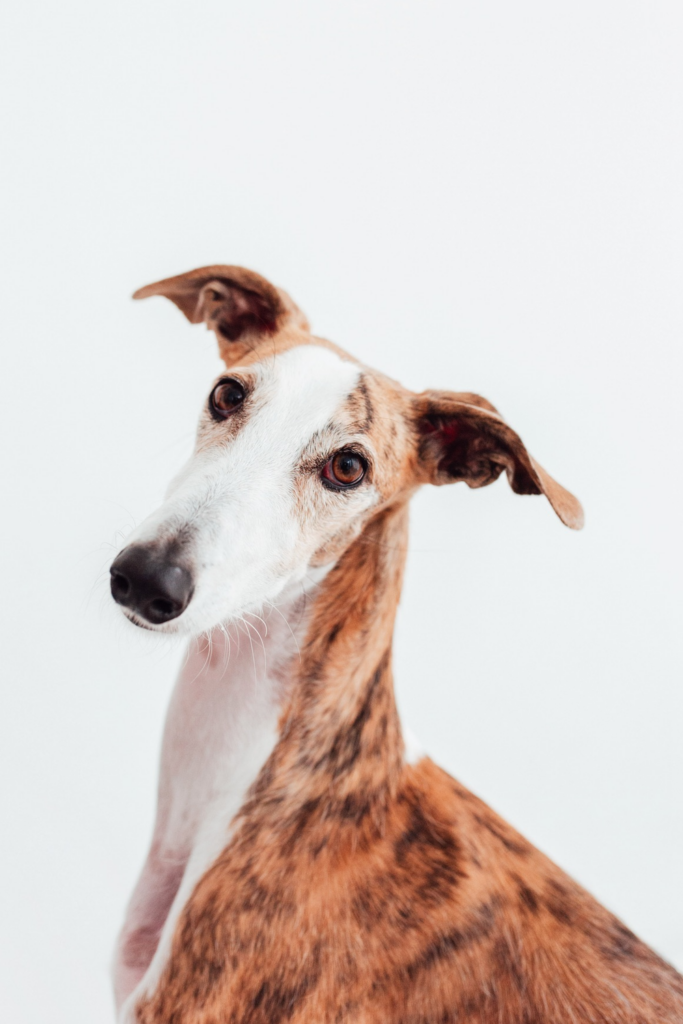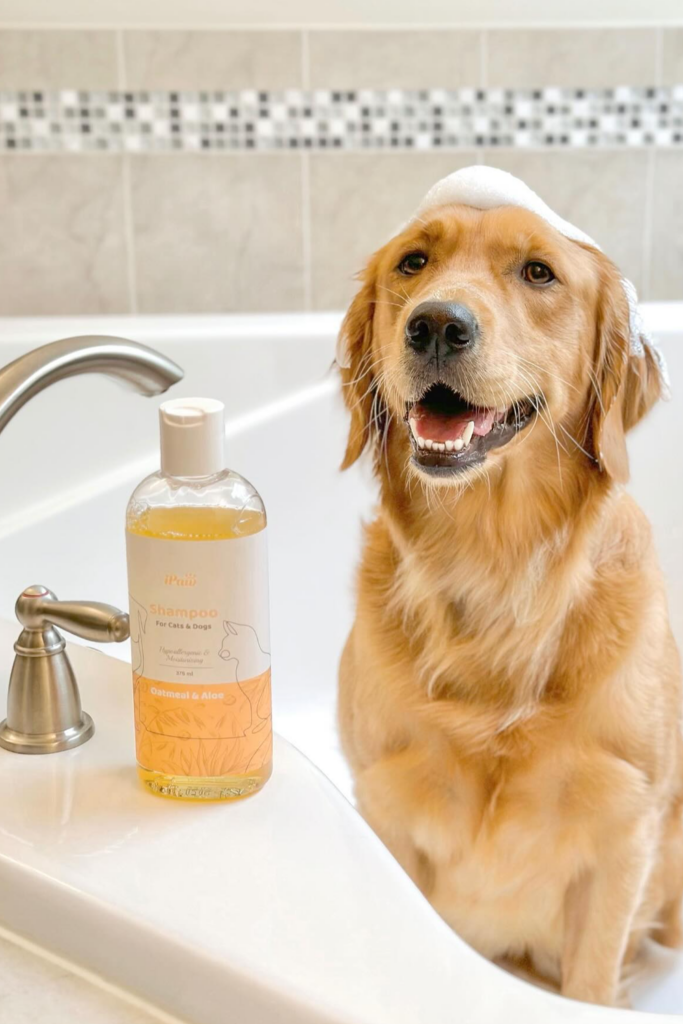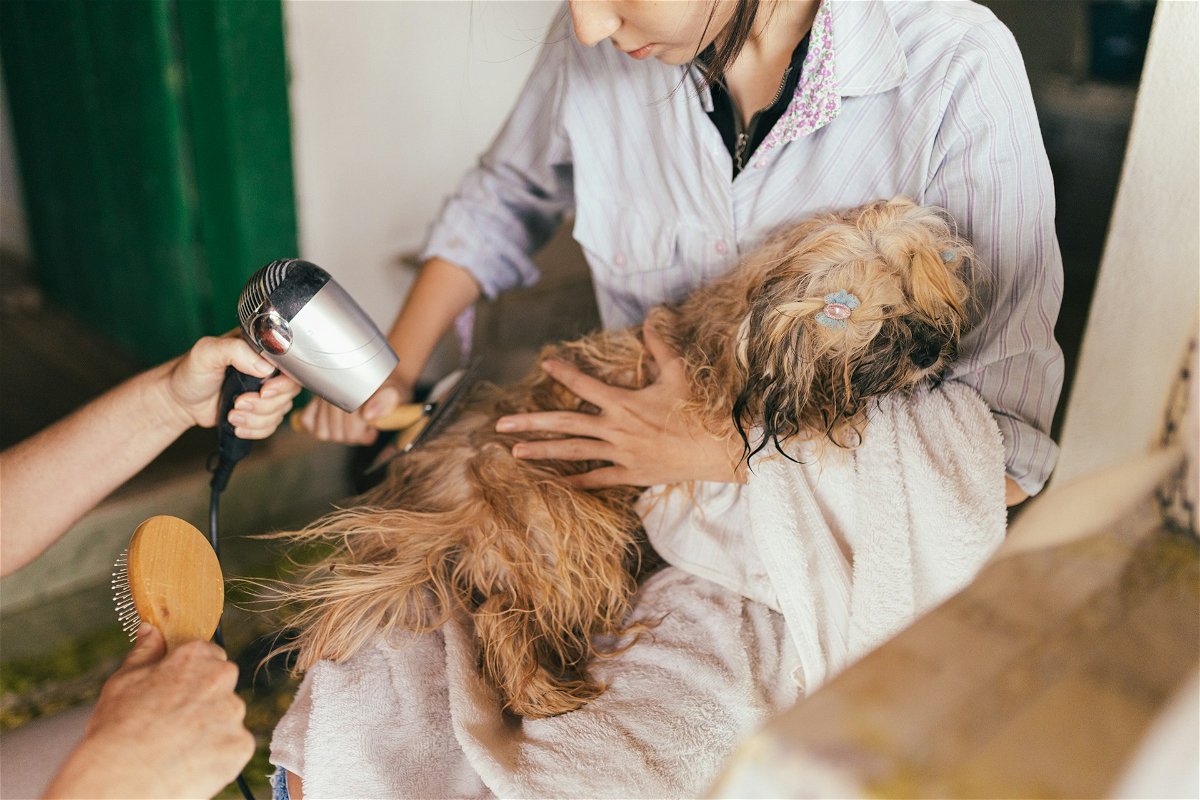We're an affiliate
We hope you love the products we recommend! Just so you know, we may collect a share of sales or other compensation from the links on this page at no additional cost to you. Thank you if you use our links, we really appreciate it!
You know the horror that comes with the intense, persistent odor when a skunk sprays your dog.
Below, you’ll find some helpful tips and tricks on how to get rid of skunk smell out of your dog without buying into the hype of tomato juice, beer, or oatmeal.
Some store-bought solutions can provide a quick fix, but if you don’t have that on hand, you can use some basic items in your home to create a homemade skunk odor remover.
Why Skunk Smell is Tough
Skunk spray is super tough to remove due to its unique chemical composition. The spray contains sulfur compounds called thiols, responsible for the immediate, pungent odor.
It also contains thioacetates, which may initially smell less pungent but slowly degrade into smelly thiols on hydrolysis.
This is why a dog might continue to smell skunky after a bath because any leftover thioacetates can reactivate the smell.
Tips & Tricks on How to Get Rid of Skunk Smell Out of Your Dog

1. Set up an outdoor cleaning station
The first and most crucial step is to move the cleaning operation outdoors. Dealing with the skunk smell inside your home can create a lingering odor in your atmosphere.
Designate a shaded spot in your yard as your de-skunking zone. This area should ideally be away from any open doors or windows to minimize the smell wafting into your home.
If you live in an apartment or within close quarters, we recommend creating a designated cleaning station within your balcony or patio.
You would want to utilize something other than the shared outdoor space for this de-skunking operation at the convenience of your neighbors.
2. Gather all your supplies
You’ll need a large tub or bucket for mixing and applying your cleaning solution, rubber gloves, plenty of clean towels for drying, and your preferred cleaning products.
3. Examine your dog’s eyes

Take a keen look into your pup’s face to see if their eyes were hit with any skunk spray. If your dog gets skunked in the eye, it can cause swelling and lead to temporary blindness in rare cases.
If you notice any sign that your dog’s eyes are not okay, flush the affected eyes with clean water or use a dog-safe eye-cleaning solution.
Check out with your vet if the irritation seems severe with deep redness, excessive tearing, squinting, or large swellings.
4. Make homemade skunk odor remover
One of the most effective ways to neutralize skunk odor is by using a simple homemade solution. Here’s what you’ll need:
- 1 quart of 3% hydrogen peroxide
- ¼ cup baking soda
- 1-2 teaspoons mild liquid dishwashing soap (grease-cutting formula recommended)
Make this DIY solution by carefully mixing ingredients into an open bucket. Make sure to prepare enough solutions for the day and do not leave any for future use.
Step 1: Lather the mixture on your dog’s coat
Put on your rubber gloves and thoroughly soak your dog’s fur with the deodorizing solution. Using a washcloth, gently work the solution into their coat with a massaging motion.
While letting the solution sit on your dog’s fur, keep in mind that hydrogen peroxide has a slight bleaching effect, especially on dark-furred canines.
If you’re concerned about this, you can shorten the soaking time of the homemade solution, but the downside is that this might leave some residue skunk odor.
Step2: Wash your dog thoroughly
Pay special attention to the areas most affected by the spray while taking extra care to avoid getting any solution in your dog’s eyes.
Step 3: Rinse with clean water
Rinse your dog thoroughly with clean warm water until the water runs clear, while ensuring all traces of the solution are removed.
Pay close attention to the fur-dense areas, and gently massage to ensure all solution is washed away. Leftover residue can cause discomfort for your dog.
Step 4: Re-wash using dog shampoo

Follow up with a regular bath using hypoallergenic canine-specific shampoo and clean warm water.
This will remove any residue from the first solution and give your dog a refreshing smell. Dry them thoroughly with a clean towel when you’re finished.
Step 5: Sniff Test
After your dog is clean and dried, carefully sniff them to see if the skunk odor is gone. If it lingers, you might need a repeat cleaning session or a visit to a groomer for professional help.
Step 5: Clean up the messed area/clothes
After you’ve tackled the tough skunky smell on your dog, don’t forget about the surrounding area and yourself.
Any surface that comes into contact with the skunk smell should be cleaned to remove the remaining sulfur-based compounds.
A mixture of diluted bleach or vinegar and water can be effective for outdoor areas.
Immediately change and toss your clothes into a washer if any of the awful smells got on them. Add regular detergent and ½ cup of baking soda into the wash cycle to help dissolve the odor.
Hang the freshly washed clothes outside to air-dry in a well-ventilated area or breezy spot for the best possible results.
Words of Caution
Dogs with sensitive skin (dry patches, flaky skin, hotspots) should not be de-skunked with this homemade solution.
Remember hydrogen peroxide solution can trigger dogs to vomit, so ensure your pooch doesn’t lick themselves after applying the solution.
De-Skunking with Store-Bought Solutions
If you prefer a ready-made option or when you are short on time, we recommend using an effective over-the-counter skunk odor eliminator.
These dog-friendly shampoos and sprays usually contain enzymes that break down the smelly sulfur-based compounds in skunk spray.
Look for products specifically labeled for skunk odor removal at your local pet store or online. Always follow product directions carefully.
The ready-made cleaning solution can be an excellent choice for dogs with sensitive skin or if you’re concerned about the potential lightening effect of hydrogen peroxide.
Debunking the Tomato Juice Myth on Skunk Odor
For decades, the go-to remedy for skunk odor was tomato juice. This urban legend gained traction because the strong smell of tomato products seemed to overpower the skunk stink.
According to Dr. Christopher S. Baird of the West Texas A&M University, tomato products like juices or sauce, do nothing to neutralize the odor-causing compounds (thiols) in skunk spray.
It merely masks the smell temporarily without oxidizing the main compounds. Once the tomato juice dries, that disgusting skunk odor comes right back.
Stick to the proven methods with hydrogen peroxide solutions, bleaches, or store-bought products to neutralize the odor-causing compounds.
Conclusion
Learning how to get rid of skunk smell out of your dog is key because your pup can have an unexpected encounter with these small animals.
Remember to act quickly, use proven homemade cleaning mixtures or store-bought solutions, and protect your pup’s eyes while bathing them.
If you’ve tried everything but the disgusting odor persists, you can contact a professional pet groomer for specialized cleaning.
Laura is the founder of Furs'n'Paws. She is a also a pet writer and expert with more than 20 years of experience of working with dogs and cats. She developed a very strong love for animals at a young age. Her passion led her to establish a thriving pet sitting and dog walking business in Dubai. As an expert in pet training, behavior, and nutrition, Laura is committed to helping pet owners and pet lovers by offering high-quality information on a wide range of topics.



No responses yet